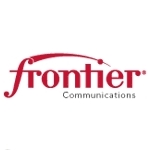 Frontier Communications may be looking like the bad guy after announcing rate hikes of as much as 46% for FiOS TV service for customers in Washington and Oregon, two of numerous markets the company acquired from Verizon last year. But the move could be the latest example of a video content pricing structure that rewards the largest video providers and penalizes smaller video operators.
Frontier Communications may be looking like the bad guy after announcing rate hikes of as much as 46% for FiOS TV service for customers in Washington and Oregon, two of numerous markets the company acquired from Verizon last year. But the move could be the latest example of a video content pricing structure that rewards the largest video providers and penalizes smaller video operators.
When Frontier acquired more than 4 million Verizon access lines in primarily rural markets last year, it found itself in the video business in a handful of markets where Verizon had deployed its FiOS offering. The FiOS markets are in Washington, Oregon and Indiana—and as of July 2010, the company had 69,000 FiOS TV customers in those markets.
It is unknown whether that number has decreased or increased since then—or whether the 69,000 number represented an increase or decrease in subscribers from the time Frontier’s plan to acquire the Verizon lines was announced about a year earlier. But it is unlikely that the number has seen a strong upward tick, as Frontier reportedly has scaled back on some FiOS TV features and Comcast—the dominant player in the Washington and Oregon markets—has used the Frontier purchase as a means of poaching FiOS video customers.
A story posted on the Oregon Live website includes a link to a letter sent by Frontier to Oregon cable regulators on Monday to advise them of the price increase in that state. In the letter, Frontier points to rising programming costs as the reason for the price increase. And several news reports cite a statement from a Frontier spokeswoman who said the company’s small “footprint” does not make it possible for the company to spread its costs over a broad customer base as some of its competitors are able to do.
Organizations representing small rural telcos, many of which offer video services, have argued that the video playing field needs to be made more level through stricter regulation of video programming prices and availability. And if indeed Frontier’s programming costs have risen dramatically because of scale issues, it would certainly support that view.
For now, Frontier is offering its FiOS video customers a significant break on DirecTV, if they choose to cut off FiOS TV. DirecTV is Frontier’s primary vehicle for delivering video services in its non-FiOS markets, which represent the vast majority of its lines.
It is unclear whether the FiOS video customers that Frontier acquired in Indiana will also see the price hike, but if that hasn’t happened yet, that would certainly seem to be imminent.


